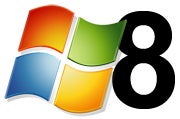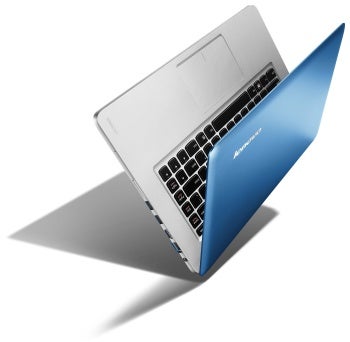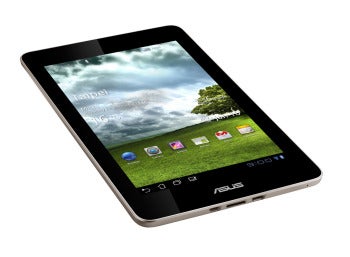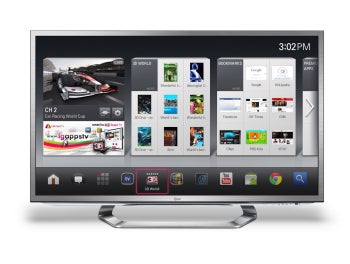Where going to get your computer to the next level. From what would be the best hardware to get the highest possible frame rate in that newly launched game? What CPU will be the best fit for you for your multi tasking needs to what type of cooling you will need to keep your computer running cool all night long . All about high end computer rigs is what we are about
Google Search
Monday, January 23, 2012
Intel DX79SI
Reviews of Intel manufactured boards are something of a rarity. They are not marketed in the same way other motherboards are – almost not at all in comparison. It could be argued that reviews are only seen coming at the start of a chipset release, coinciding with what we as reviewers get in our media kits from Intel itself. However, to an enthusiast, it is strange to say that they sell well – consumers or system builders wanting to pair a processor with a board without hassle can go straight in at an Intel motherboard/processor combo. The question is with an enthusiast platform such as X79,by ian cutress
Monday, January 16, 2012
Windows 8 Coming in October?
Microsoft aiming for October to release the commercial version of Windows 8, based on comments attributed to a Microsoft spokeswoman at CES.
 A demo of the new operating system, public relations director of the Windows Business Group Janelle Poole said, "Windows releases come round about every three years and this year will be three years in October since we launched Windows 7," according to a posting by Pocket-lint. "So I think that's a good guideline to consider."
A demo of the new operating system, public relations director of the Windows Business Group Janelle Poole said, "Windows releases come round about every three years and this year will be three years in October since we launched Windows 7," according to a posting by Pocket-lint. "So I think that's a good guideline to consider."
Microsoft has been reluctant to say exactly when it will Windows 8, but Poole seemed ready to offer a strong hint. "We haven't talked about the release date and we generally don't. We are talking milestone to milestone, so for us right now we're talking about the next milestone being the consumer preview happening in late February," she says.
Windows 8 will feature touchscreen navigation and commands as well as support for tablets. Not all apps that run on Windows 7 will be compatible with the touchscreen capabilities, but mouse and keyboard devices will enable all apps that ran on Windows 7.
The new operating system shoots for power efficiency, better security and compatibility with ARM-based chips (read tablets and next-generation PCs), all of which could make Windows 8 attractive to businesses.by tim greene
 A demo of the new operating system, public relations director of the Windows Business Group Janelle Poole said, "Windows releases come round about every three years and this year will be three years in October since we launched Windows 7," according to a posting by Pocket-lint. "So I think that's a good guideline to consider."
A demo of the new operating system, public relations director of the Windows Business Group Janelle Poole said, "Windows releases come round about every three years and this year will be three years in October since we launched Windows 7," according to a posting by Pocket-lint. "So I think that's a good guideline to consider." Microsoft has been reluctant to say exactly when it will Windows 8, but Poole seemed ready to offer a strong hint. "We haven't talked about the release date and we generally don't. We are talking milestone to milestone, so for us right now we're talking about the next milestone being the consumer preview happening in late February," she says.
Windows 8 will feature touchscreen navigation and commands as well as support for tablets. Not all apps that run on Windows 7 will be compatible with the touchscreen capabilities, but mouse and keyboard devices will enable all apps that ran on Windows 7.
The new operating system shoots for power efficiency, better security and compatibility with ARM-based chips (read tablets and next-generation PCs), all of which could make Windows 8 attractive to businesses.by tim greene
Saturday, January 14, 2012
CES 2012 Tech Trends Failure?
2012 International CES--the Las Vegas-based tech mega-showcase formerly known as the Consumer Electronics Show--is winding down. So ends four days of demos, meetings, presentations, parties, and bluster.
For journalists and civilians alike, CES offers a great way to monitor the state of technology. An event with piles of product introductions, interesting ideas, and out-of-left-field innovations suggests a healthy tech ecosystem, with plenty for consumers to get jazzed about in the coming year. A lackluster CES foretells a dreary tech landscape.
 Lenovo IdeaPad U410 laptopFortunately, CES 2012--which put roughly 20,000 new products on display--was chockablock with great new stuff. The big themes were smart HDTVs, Ultrabooks (supermodel-thin laptops built around Intel's latest chips), and--inevitably--Android tablets.
Lenovo IdeaPad U410 laptopFortunately, CES 2012--which put roughly 20,000 new products on display--was chockablock with great new stuff. The big themes were smart HDTVs, Ultrabooks (supermodel-thin laptops built around Intel's latest chips), and--inevitably--Android tablets.
Which means that 2012 will be the year of brainy televisions, MacBook Air lookalikes, and tablets that don't start with a lowercase i, right?
Not so fast, pardner.
CES may be a terrific barometer for tech's health in aggregate, but its guidance on the specifics--on which products or product categories will be hits in the coming 12 months--can be shaky.
Consider the events of the past four years. CES 2009 was all about the netbook. These cheap mini-notebooks--generally running Windows XP--burst onto the scene in 2007 or so. Consumers loved them and opened their wallets in appreciation. In short order, PCWorld.com's Top 10 Netbooks chart became one of the most popular pages on our site.
The crash came hard, however. Because these machines were underpowered, uninspiring, and often indistinguishable from one another, sales soon tailed off. The 2010 introduction of the iPad, together with the ongoing development of highly functional new smartphones, helped make netbooks a far less attractive purchase--even though many are priced at well under $500.
 Asus Eee Pad MeMo 370T tabletAnother OMG product at CES 2009 was an awesome three-button, 3G- and Bluetooth-enabled watch phone from LG. After seeing it, I wanted it. A lot. And I thought others would too. Chalk that one up to middle-age exuberance and a willful decision to disregard history. My having been a Dick Tracy fan as a kid may also have factored into it.
Asus Eee Pad MeMo 370T tabletAnother OMG product at CES 2009 was an awesome three-button, 3G- and Bluetooth-enabled watch phone from LG. After seeing it, I wanted it. A lot. And I thought others would too. Chalk that one up to middle-age exuberance and a willful decision to disregard history. My having been a Dick Tracy fan as a kid may also have factored into it.
In 2010, you may recall, CES attendees were gaga over e-readers. They were deemed so promising that the show's promoters accorded them their own "Tech Zone" on the Las Vegas Convention Center floor. I remember attending product demos on at least ten of them and then struggling to decide which one I wanted for myself. Spring Design's top-notch Alex Reader? The Plastic Logic Que? The iRiver Story?
The correct answer turned out to be, "none of the above." The e-reader revolution didn't materialize (thanks, again, to tablets and smarter smartphones). Folks still buy e-readers, but not in the volume that most industry observers had anticipated.
 LG Google TVCES 2011 shaped up as a coming-out party for 3D everywhere: HDTVs, camcorders, you name it. The industry oversold 3D; consumers as a whole didn't bite. At this point, most observers continue to believe that 3D TVs will eventually become commonplace, as 3D glasses improve and 3D content becomes more readily available. I'll give 3D a grade of Incomplete for now, and revisit it in a few years.
LG Google TVCES 2011 shaped up as a coming-out party for 3D everywhere: HDTVs, camcorders, you name it. The industry oversold 3D; consumers as a whole didn't bite. At this point, most observers continue to believe that 3D TVs will eventually become commonplace, as 3D glasses improve and 3D content becomes more readily available. I'll give 3D a grade of Incomplete for now, and revisit it in a few years.
What about this year's CES standouts? TVs are back, and they're more capable and connected than ever, even if 3D isn't their main selling point. (see Patrick Miller's "Why 3D TV Isn't 'Cool' at CES This Year"). Meanwhile, Ultrabooks are out to prove that they're not this year's version of the netbook. And Android tablet makers are hoping to generate some noise in a market dominated by the iPad.
So let me go on record right here as saying that I believe all three will find great success in 2012. And I also have a fantastic watch phone that I'd like to sell you cheap.by steve fox pc world
For journalists and civilians alike, CES offers a great way to monitor the state of technology. An event with piles of product introductions, interesting ideas, and out-of-left-field innovations suggests a healthy tech ecosystem, with plenty for consumers to get jazzed about in the coming year. A lackluster CES foretells a dreary tech landscape.
 Lenovo IdeaPad U410 laptopFortunately, CES 2012--which put roughly 20,000 new products on display--was chockablock with great new stuff. The big themes were smart HDTVs, Ultrabooks (supermodel-thin laptops built around Intel's latest chips), and--inevitably--Android tablets.
Lenovo IdeaPad U410 laptopFortunately, CES 2012--which put roughly 20,000 new products on display--was chockablock with great new stuff. The big themes were smart HDTVs, Ultrabooks (supermodel-thin laptops built around Intel's latest chips), and--inevitably--Android tablets. Which means that 2012 will be the year of brainy televisions, MacBook Air lookalikes, and tablets that don't start with a lowercase i, right?
Not so fast, pardner.
CES may be a terrific barometer for tech's health in aggregate, but its guidance on the specifics--on which products or product categories will be hits in the coming 12 months--can be shaky.
Consider the events of the past four years. CES 2009 was all about the netbook. These cheap mini-notebooks--generally running Windows XP--burst onto the scene in 2007 or so. Consumers loved them and opened their wallets in appreciation. In short order, PCWorld.com's Top 10 Netbooks chart became one of the most popular pages on our site.
The crash came hard, however. Because these machines were underpowered, uninspiring, and often indistinguishable from one another, sales soon tailed off. The 2010 introduction of the iPad, together with the ongoing development of highly functional new smartphones, helped make netbooks a far less attractive purchase--even though many are priced at well under $500.
 Asus Eee Pad MeMo 370T tabletAnother OMG product at CES 2009 was an awesome three-button, 3G- and Bluetooth-enabled watch phone from LG. After seeing it, I wanted it. A lot. And I thought others would too. Chalk that one up to middle-age exuberance and a willful decision to disregard history. My having been a Dick Tracy fan as a kid may also have factored into it.
Asus Eee Pad MeMo 370T tabletAnother OMG product at CES 2009 was an awesome three-button, 3G- and Bluetooth-enabled watch phone from LG. After seeing it, I wanted it. A lot. And I thought others would too. Chalk that one up to middle-age exuberance and a willful decision to disregard history. My having been a Dick Tracy fan as a kid may also have factored into it. In 2010, you may recall, CES attendees were gaga over e-readers. They were deemed so promising that the show's promoters accorded them their own "Tech Zone" on the Las Vegas Convention Center floor. I remember attending product demos on at least ten of them and then struggling to decide which one I wanted for myself. Spring Design's top-notch Alex Reader? The Plastic Logic Que? The iRiver Story?
The correct answer turned out to be, "none of the above." The e-reader revolution didn't materialize (thanks, again, to tablets and smarter smartphones). Folks still buy e-readers, but not in the volume that most industry observers had anticipated.
 LG Google TVCES 2011 shaped up as a coming-out party for 3D everywhere: HDTVs, camcorders, you name it. The industry oversold 3D; consumers as a whole didn't bite. At this point, most observers continue to believe that 3D TVs will eventually become commonplace, as 3D glasses improve and 3D content becomes more readily available. I'll give 3D a grade of Incomplete for now, and revisit it in a few years.
LG Google TVCES 2011 shaped up as a coming-out party for 3D everywhere: HDTVs, camcorders, you name it. The industry oversold 3D; consumers as a whole didn't bite. At this point, most observers continue to believe that 3D TVs will eventually become commonplace, as 3D glasses improve and 3D content becomes more readily available. I'll give 3D a grade of Incomplete for now, and revisit it in a few years. What about this year's CES standouts? TVs are back, and they're more capable and connected than ever, even if 3D isn't their main selling point. (see Patrick Miller's "Why 3D TV Isn't 'Cool' at CES This Year"). Meanwhile, Ultrabooks are out to prove that they're not this year's version of the netbook. And Android tablet makers are hoping to generate some noise in a market dominated by the iPad.
So let me go on record right here as saying that I believe all three will find great success in 2012. And I also have a fantastic watch phone that I'd like to sell you cheap.by steve fox pc world
Friday, January 6, 2012
Amd Radeon 7970 HD
Wednesday, January 4, 2012
Nvidia New Gpu's Coming Soon?
Nvidia won't release its first graphics cards based on the 28nm Kepler architecture until the start of 2012 although mass production will start in the last part of this year, said a company representative in a recent interview.
This information was provided by Nvidia PR representative Ken Brown, which had a talk with Fudzilla about the state of the company's next-generation graphics chips.
A definitive release date wasn't announced, but it seems like Kepler will arrive in the first quarter of 2012.
What's interesting to note is that, according to the latest rumors cited by VR-Zone, Nvidia has opted to release the 28nm die shrink of Fermi for notebook computers before its first Kepler GPUs.
Nvidia has reached this decision since the first chip based on the Kepler architecture will be a replacement for the current GF110 (used in the GTX 580 and GTX 570), such a part being much to power hungry for a notebook GPU.
Kepler is the code name used by Nvidia to refer to its next-generation graphics processing unit architecture, which, just like AMD's Southern Islands GPUs, will be manufactured using TSMC's 28nm fabrication process.
The new graphics core is expected to be more flexible in terms of programmability than the current Fermi architecture.
In the second half of 2010, Nvidia promised that Kepler, and its successor Maxwell, will include virtual memory space (allowing both the CPU and the CPU to use a unified virtual memory) and pre-emption support, as well as a series of other technologies meant to improve the GPU's ability to process data without the help of the system's processor.
According to previous Nvidia estimates, these changes, combined with the new manufacturing process, should deliver 3 to 4 times the performance per Watt of the Fermi architecture in double-precision 64-bit floating point operations.
In the consumer market, Kepler-based graphics cards will most likely carry the GeForce 600 designation.by Sorin Nita
A definitive release date wasn't announced, but it seems like Kepler will arrive in the first quarter of 2012.
What's interesting to note is that, according to the latest rumors cited by VR-Zone, Nvidia has opted to release the 28nm die shrink of Fermi for notebook computers before its first Kepler GPUs.
Nvidia has reached this decision since the first chip based on the Kepler architecture will be a replacement for the current GF110 (used in the GTX 580 and GTX 570), such a part being much to power hungry for a notebook GPU.
Kepler is the code name used by Nvidia to refer to its next-generation graphics processing unit architecture, which, just like AMD's Southern Islands GPUs, will be manufactured using TSMC's 28nm fabrication process.
The new graphics core is expected to be more flexible in terms of programmability than the current Fermi architecture.
In the second half of 2010, Nvidia promised that Kepler, and its successor Maxwell, will include virtual memory space (allowing both the CPU and the CPU to use a unified virtual memory) and pre-emption support, as well as a series of other technologies meant to improve the GPU's ability to process data without the help of the system's processor.
According to previous Nvidia estimates, these changes, combined with the new manufacturing process, should deliver 3 to 4 times the performance per Watt of the Fermi architecture in double-precision 64-bit floating point operations.
In the consumer market, Kepler-based graphics cards will most likely carry the GeForce 600 designation.by Sorin Nita
Subscribe to:
Posts (Atom)


